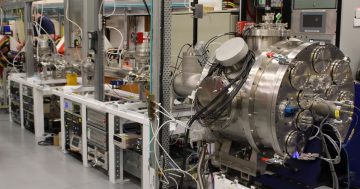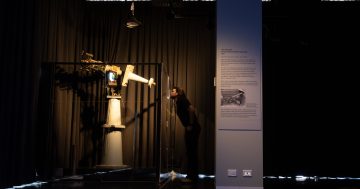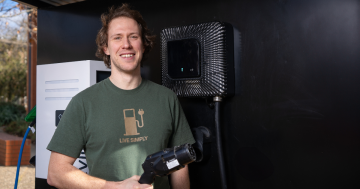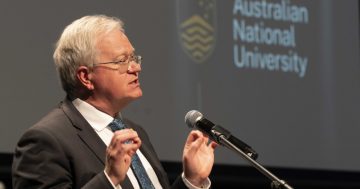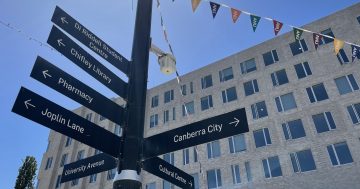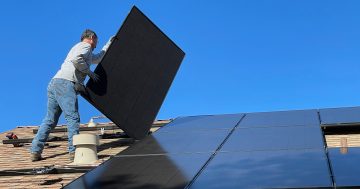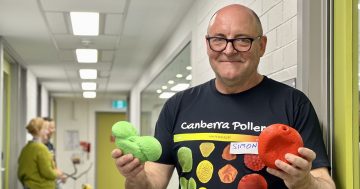
The Quantum Brilliance team is a spin-off of physics students at ANU. Photo: Supplied.
Even if you don’t understand quantum computing, a business start-up of students from the Australian National University’s physics department is turning up the heat on the technology that uses synthetic diamonds so the computer can operate at room temperature.
Designed on campus at ANU, this quantum computer doesn’t need to be cryogenically frozen to work and is believed to be the world’s first room-temperature quantum computer – and it can even fit in your lunchbox.
The project has reached the milestone of building a quantum computer that can be deployed in data centres, hospitals, mines, space and even laptops.
Using synthetic diamonds to build quantum accelerators, the technology will develop cutting-edge quantum applications in machine learning, logistics, defence, aerospace, quantum finance and quantum research.
Quantum Brilliance, a venture-backed Australian quantum computing start-up from ANU, will install the world’s first diamond quantum accelerator at the Pawsey Supercomputing Centre in Perth in June.
The computer is in the final stages of its build, but the business start-up is one of only a few companies in the world able to deliver market-ready quantum computing systems for customers to operate on-site. The technology is expected to be more widely available in the next five years.
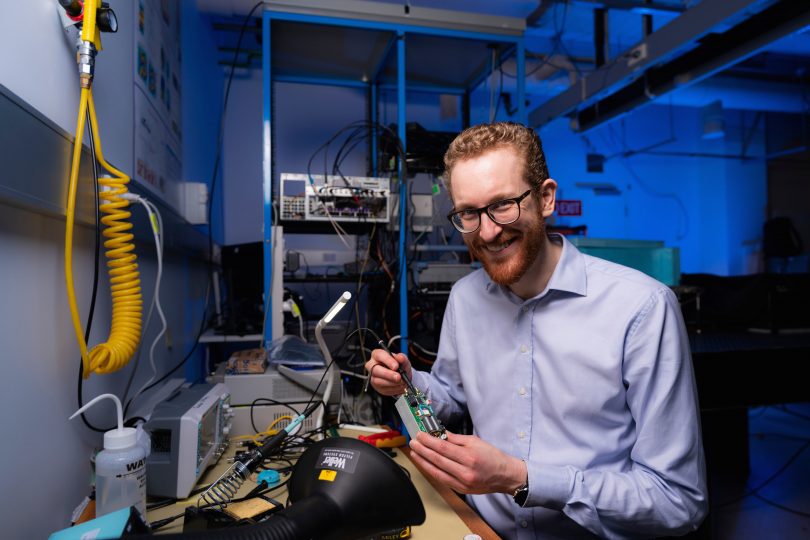
Dr Andrew Horsley at the Quantum Brilliance laboratory at ANU. Photo: Jamie Kidston, ANU.
Quantum Brilliance CEO Dr Andrew Horsley said their technology aims to bring quantum computing into everyday uses, in contrast to quantum computers being developed by technology giants such as Google and IBM.
Dr Horsley said their start-up has grown rapidly despite the COVID-19 pandemic, with more than 20 staff and international partners in North America, Europe and the Asia-Pacific.
“We are only starting to see how quantum accelerators can transform industries in Australia and around the world,” Dr Horsley said.
“Because of our unique diamond-based technology, customers can run our quantum computers themselves and we provide them with a full set of tools to explore how quantum can help create new capabilities.
“We are one of a very small handful of companies with the capability to deliver quantum computing hardware directly to customers.”
This development of the technology has been made possible through grants from the ANU and the Australian Government’s Accelerating Commercialisation scheme.
ANU vice-chancellor Professor Brian Schmidt said Quantum Brilliance’s work was vital and represents the future of quantum computing.
“Quantum Brilliance and its work to develop an affordable room temperature, lunchbox-sized quantum computer that will become part of everyday life is the perfect example of this,” Professor Schmidt said.
“The University’s goal to create a billion-dollar company in the next five years will happen by supporting research commercialisation for spin-outs like Quantum Brilliance. But while it is early days, backing it now could lead to huge payoffs for all of us.”
Pawsey’s executive director Mark Stickells said he was delighted to see active engagement from industry and researchers to develop quantum computing.
“We are excited to explore the potential of this technology for Australian researchers to further accelerate their scientific workflows using the potential of quantum computing within the advanced infrastructure of a national research supercomputing centre.”
The ongoing growth of Australia’s expanding diversity in the quantum computing landscape brings Australia one step closer towards a National Quantum Computing Facility, one of the recommendations within CSIRO’s 2020 Quantum Technology Roadmap.













